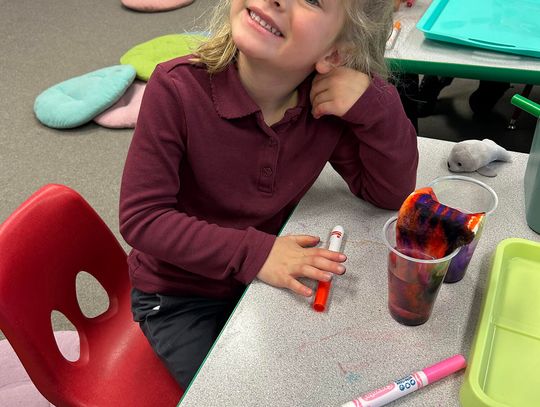By 2024, local Navy leadership anticipates 1,000 new jobs at the base between active-duty personnel and civilian support staff.
As the local mission expands with the new F-35 jets, and the potential expansion of the base with the proposed Fallon Range Training Complex modernization, the four-fold increase of the range simply requires more personnel.
While more jobs support the Fallon economy, expansion will contribute to a housing crisis at the base which equates to more strain on the already desperate housing shortage in Churchill County.
Captain Evan Morrison, commander at NAS Fallon keeps a binder on his desk that is the Housing Requirement Market Analysis completed every five years by the Commander of the Navy Installation Command in Washington D.C. He calls it the “bible” the Navy uses to determine how much base housing is needed to meet the demand of active-duty personnel and is a projection of what will be needed in five years.
The study is a five-year projection based on the local economy, mission of the base, and existing inventories at the base and in the local community and it shows there is currently a deficiency with military housing. This in spite of the current housing project will bring online a total of 219 homes by the end of September this year.
The report says NAS Fallon needs 192 more houses.
However, Morrison says the data used to create the report is flawed on several fronts. The CNIC says there are 940 active-duty personnel at the base, “but we know we have 1,248 active duty right now so already starting off out of the gate we are on the wrong foot.” He said by 2025 the CNIC projects 1,344 active-duty personnel but the base is programmed to have 1,672. “That’s a 300+ Delta and it is difficult to get the pentagon to listen to us.”
Additionally, while the report addresses the scarcity of inventory problems Morrison said that is only one data point and does not address how to solve it.
Another flaw Morrison sees in the report is an automatic “tax” on the data imposed by the CNIC when the numbers are reported to account for any fluctuation in the local housing demand. The 192 homes are automatically reduced by 10% to allow for a fluctuation in local housing demand giving NAS Fallon a projected number of 172 houses needed.
Morrison said NAS Fallon is the only base in the navy out of 71 installations that meet the critical housing area criteria. “We also have an extra 348 people not accounted for in this report. I scream it from the mountain top, but the silence is deafening,” he said.
Recently, Bruce Breslow, the economic development consultant hired by Churchill County and the City of Fallon brought DB Horton, a national home building company to the community for a tour and visited with Morrison. “Whenever we meet with any new developers it gives me hope for a pressure relief valve,” he said. Those entities can build a lot faster than the Navy, which he said is two to three years from breaking ground on any potential housing development.
Recently, four new First class petty officers checked in for duty and reported that one would be living in Fallon, one in Fernley, one in Reno, and one in the Barracks. Morrison said quite a few personnel live in Reno and Sparks, making an hour a half drive twice a day. Many live in Fernley.
Although purchase prices for homes are high, the market price for rentals has continued to climb even more, and the Navy housing allowance doesn’t meet the market demand signal. An E-3 could live in town, but with an $850 allowance, would have to have three roommates to afford any housing that is available. Currently there are six homes available in Fallon to rent – a 3 bed/1.5 bath for $1,150, four 4/2 for $1,850, and a 4/2 for $1,995. In Fernley, there are several 3/2 ranging from $1,650 to $1,900 per month.
“The supply and demand issue here can’t meet our deficit and it’s forcing our sailors farther away from the base and a longer commute,” said Morrison. Additionally, nearly 30 sailors are “geo-batching” a term used to describe leaving family in a previous duty station.
Normally the base is authorized to allocate 5% of the unaccompanied housing inventory to use as geo batch rooms. “We requested a waiver to the region and are currently using 15% of the rooms, allowing for a room with a bed, and a small kitchenette. In some instances, the rooms are doubled up and new requests are being denied because we don’t have any more room.” The problem is now staff is paying for housing here and paying where the family is living.
Additionally, the RV Park, normally designed for leisure travel, with 26 concrete pads and six overflow spaces are all occupied by permanently stationed personnel because they can’t find a suitable place to live.
“Until the supply increases, we have folks who are living farther and farther away from the base or leaving their families at a previous duty station and coming alone,” said Morrison.
Morrison said growth is the number one challenge for the base. Not only does he expect a 348 active duty billeting increase from 2020 to 2025, but the civilian contractors and General Services staff will bring 625 more personnel. This 33% increase in base loading over five years is not just a housing problem, but the personnel expansion impacts all the base services that operate on a daily basis including the commissary, health care, and the gym.
“As we look forward down the road, training to near-peer threat right now, we don’t have the capability to train effectively,” said Morrison. He said China is the number one most capable threat and is an ever-evolving “demand signal” as technology changes. With seven to eight years from the ranges being useable, it is unimaginable what the threat tech and tactics will be at that time and the Navy will have to train to meet those emerging threats.
One example of the difference between the U.S. and China is air space use. “We do not own the airspace above the Fallon range training complex, we negotiate that on a daily basis with Oakland Center depending on how much air traffic they have, and we may be limited to space and how much we can use,” said Morrison. “It is almost a physical impossibility to expand our airspace, however, the difference of what we go through and what China does if they need to operate a large force exercise, they will shut down commercial air traffic over the country. They just do it on a moment's notice and halt all civilian traffic they don’t have the democratic statutory regulatory process that we have to go through to make our case.”
If China needs to train, they will just implement a plan regardless of cultural or natural resources. Morrison said it is just a different system and way of life. “That is the highest threat we need to train to.”









































Comment
Comments